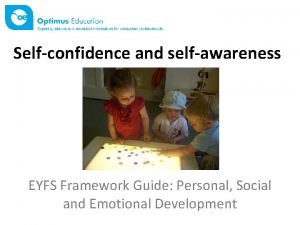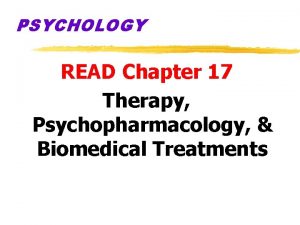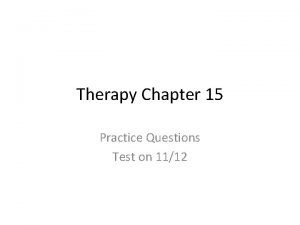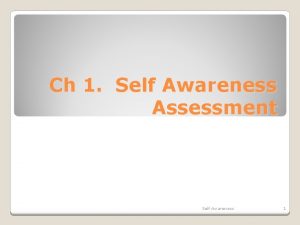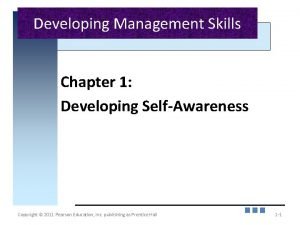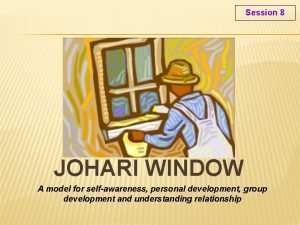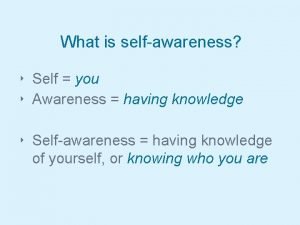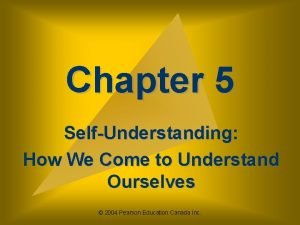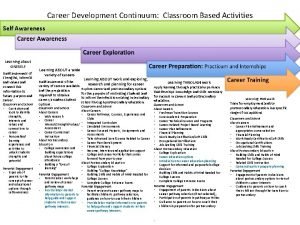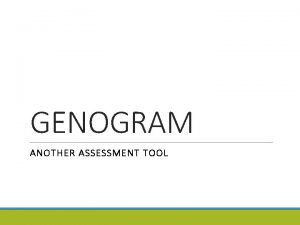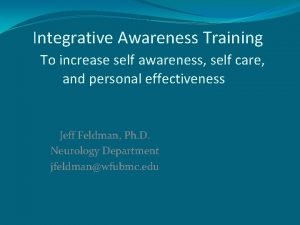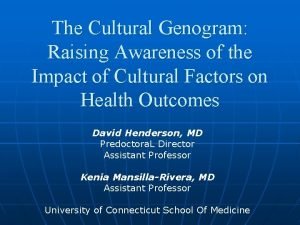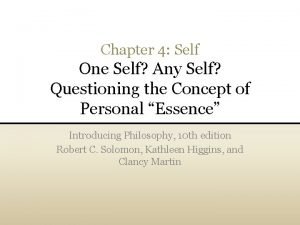Genogram Creating Awareness Therapists Self Genogram is a












- Slides: 12

Genogram: Creating Awareness

Therapist’s Self • Genogram is a tool for self-understanding • Useful to improve therapist’s effective • Therapist’s heightened self understanding is applied to better understand engage with clients

Purpose of a Genogram • Definition: exploration of family psychological history to identify patterns • Clinical Tool for assessment and exploration of client • Use: • • • Engage with client Reframe Problems – from individual to systemic perspective Detoxify Individual Issues Empower with self-understanding Connect to family history and family identity

Assumptions in Genogram work • Family is primary – organizes values, structures, perceptions, coping style, and behaviors • Families repeat patterns generationally • Historical stresses (immigration, economic loss, racism, isolation) compound Present stresses (dx with depr, grief, illness, etc. )

Patterns to Identify • 1. Triangles in Relationships: Dyad to Triad (avoidance, distancing, loss of intimacy, etc. ) • The dyad is the basic building block of the genogram tree • When dyad is unstable it dilutes itself • Example: Mother over-involved with child in midst of a stale marriage, affair to avoid marital tension, tv/hobbies, over-involved with work or pets

Patterns cont. • Convergence of Life Events: Stressful events come in bunches • Death of Family Member and Births • Job Loss and Affair • Empty nest and Major Life changes

Patterns cont. • Family Repeats Patterns • • Illnesses : See same illness repeating generationally Death: manner, early/sudden, etc. Loss Trauma

Patterns cont. • Roles • • Femininity, Masculinity Parental Child Who is the caretaker • Intimacy Patterns: • • Cut-offs Enmeshments Closeness Responsibility

• Rules of Behavior • What emotions are allowed (e. g. , Sadness not acceptable but anger is) • Taboo topics, subjects • How emotions are expressed, rules about Patterns cont. expression (e. g. , is anger acceptable only when expressed as a masculine power? , is affection acceptable only nonverbally but not verbally? ) • Gender Role Definition • Sexual Scripts

Patterns Cont. • Patterns of Status and Power: • Imbalances of Over-functioning vs Under-functioning • Family Secrets, Myths, Stories told by family to reinforce narratives • Financial Patterns of Success followed by failure intergenerationally

Case Analysis • Cassie: 19 year-old young woman from Thailand who sought out tx for depr and suicidal thinking. She shares that although her parents want her to pursue a career in the health care, she has always had a passion for working in theatre. Her parents strongly discourage her and insist that she choose a ‘practical’ career. She has strong ties to her family rooted in her culture. Her therapist was born and raised in the U. S. and has a strong view on validating one’s own individual passions and defines self-actualization from that perspective. Are there potential problems in this therapeutic relationship?

Additional Notes • Historical Stresses: Poverty, Racism, Sexism, Homophobia Violence, Addictions Family Enmeshed Patterns Myths, Triangles, Secrets Illness, Genetic Illness Religious Beliefs • Current Stresses: Life Cycle Transitions, Unpredictable Events (accidents, illness, economic loss), Cultural Events (economic changes, Political events)
 Eyfs
Eyfs Client centered therapists try to appreciate
Client centered therapists try to appreciate Which of the following therapists would most likely
Which of the following therapists would most likely Royal college of occupational therapists
Royal college of occupational therapists True self ideal self
True self ideal self Privacy awareness and hipaa awareness training cvs
Privacy awareness and hipaa awareness training cvs Drawbacks of johari window
Drawbacks of johari window Self-awareness examples
Self-awareness examples Sensitive line self awareness
Sensitive line self awareness Jendela johari
Jendela johari Why is self-awareness important
Why is self-awareness important Self awareness definition
Self awareness definition Self awareness continuum
Self awareness continuum
